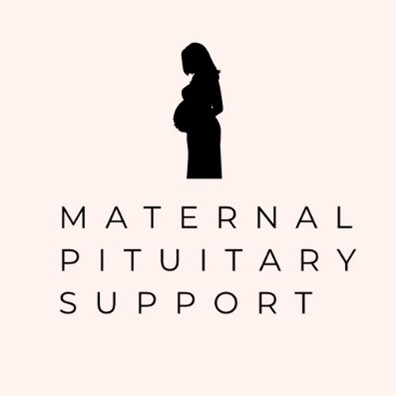Maternal Pituitary Support – An Introduction
Becoming a parent is a unique experience and we recognise that coming to terms with a life changing diagnosis during this time requires specific understanding and support. We have both experienced first-hand the lack of information and support, and the isolation that comes with a diagnosis of a rare and often overlooked condition. In addition, the incredible challenges of caring for a baby and recovering from a traumatic birth whilst seeking a diagnosis or learning to manage a complex condition.
Our vision is to provide a safe and supportive community for those living with maternal pituitary conditions. This includes those who may have sadly experienced miscarriage, stillbirth, or loss of their baby. We use the term maternal pituitary conditions for clarity.
We are passionate about making a difference to these women and their families all over the world. Unfortunately, these rare pituitary conditions are under researched, and we hope to change this. We will campaign for greater awareness amongst healthcare professionals, and we will support training and education to reduce time to diagnosis and improve treatment and care.
Our website and membership will launch in May this year. Please join our conversation and get involved by connecting on social media and signing up to our newsletter.
Maternal pituitary conditions:
The pituitary gland becomes enlarged during pregnancy to respond to increased hormonal demands, making it vulnerable to damage. In addition, the anterior pituitary (front) relies on oxygenated blood from the hypothalamus and the posterior (back) pituitary, making it further vulnerable to damage if it does not receive enough blood.
Sheehan’s Syndrome: is where blood loss and low blood pressure during and after childbirth cause pituitary tissue to be damaged. Typically, for a clinical presentation 75% of tissue needs to be damaged. There is no link between the amount of blood lost and the degree of damage. Hormone deficiencies vary and may include both the anterior and posterior. There are thought to be other factors including autoimmune responses and small size of the cella (the bony hollow the pituitary sits within).
Lymphocytic Hypophysitis: is an autoimmune inflammation of the pituitary, causing it to significantly enlarge. This may be accompanied by severe headaches, visual disturbance, or hormone excesses. If there is tissue damage, there may also be hormone deficiencies. Lymphocytic Hypophysitis occurs in all the population but is most common in pregnancy.
Post-Partum Hypopituitarism: is the term given for hypopituitarism that arises following pregnancy and childbirth. Mothers may be given a diagnosis of post-partum hypopituitarism of unknown cause.
Authors:
Maternal Pituitary Support was established in February 2022. It is a not-for-profit community interest company registered in the UK, founded by Claire and Jenn, two mothers with pituitary conditions that arose in pregnancy and childbirth.
Claire Barlow
Director & Founder
Jenn Kenworthy
Director & Founder
Contact details:
www.maternalpituitarysupport.org
Twitter: @MaternalPitSupp
Instagram: maternalpituitarysupport
March 2022





